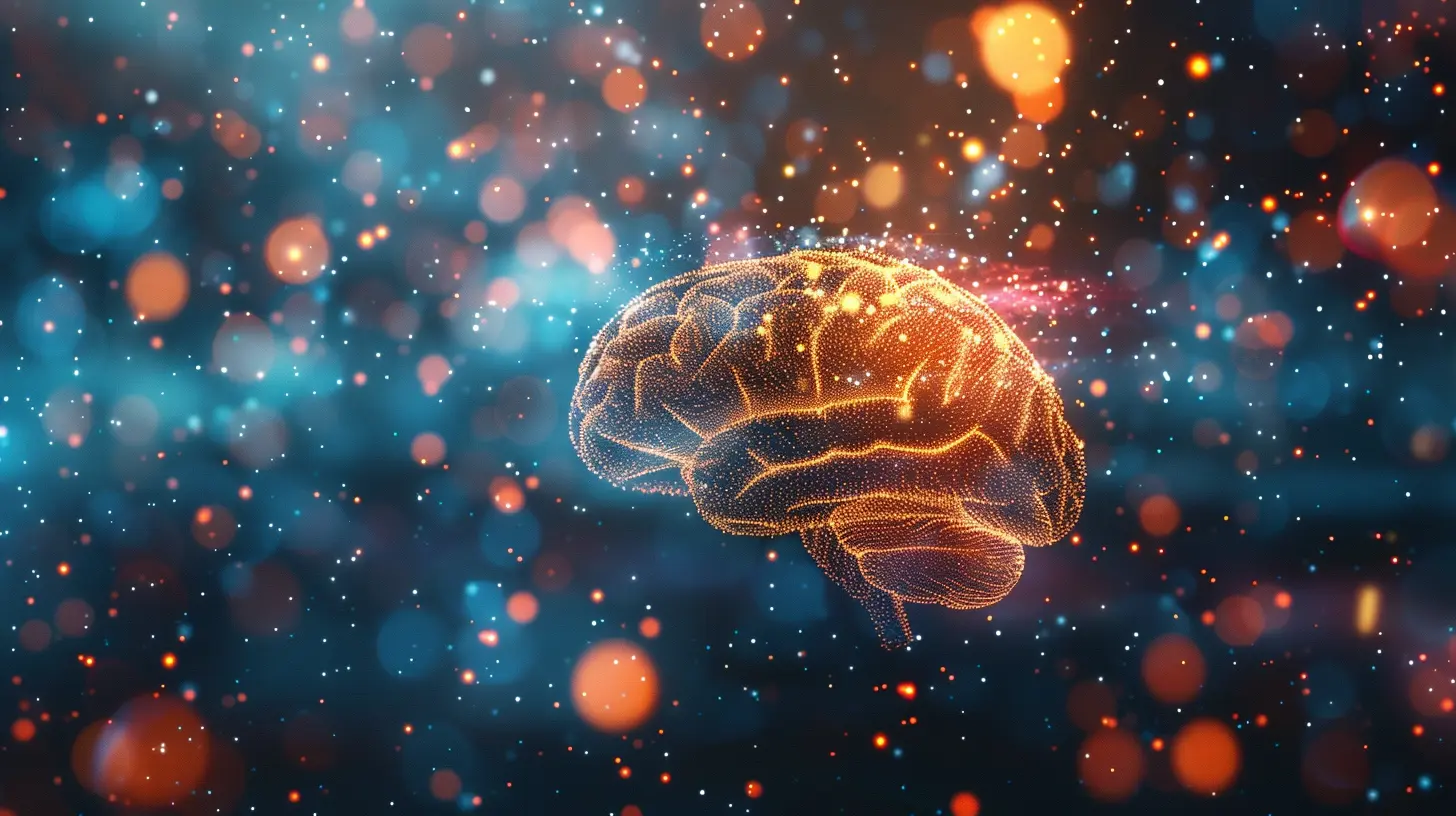Exploring the Default Mode Network: The Brain's Daydreaming State
26 November 2025
Have you ever caught yourself staring out the window, lost in thought, drifting away into a daydream? That seemingly idle state isn’t just your brain taking a break—it’s actually hard at work. Enter the Default Mode Network (DMN), a fascinating neural system that kicks into gear when your mind wanders.
But what exactly is the DMN, and why does it matter? Is it just a mental idling process, or does it serve a deeper purpose? Let’s dive in and explore the science behind this mysterious brain network. 
What is the Default Mode Network (DMN)?
The Default Mode Network (DMN) is a set of brain regions that become active when you're not focused on the outside world. Think of it as the brain’s "background mode"—it runs when you're daydreaming, reflecting on the past, or imagining the future.While many brain functions operate when we're engaged in active tasks (like problem-solving or responding to external stimuli), the DMN takes over during moments of rest or introspection. It’s like your brain’s default setting when there's no immediate task to complete.
Key Brain Regions Involved in the DMN
The DMN isn’t a single brain structure but a collection of interconnected areas, including:- Medial Prefrontal Cortex (mPFC) – Involved in self-referential thinking and social cognition.
- Posterior Cingulate Cortex (PCC) – Plays a role in memory retrieval and self-reflection.
- Inferior Parietal Lobule – Related to processing personal experiences and integrating information.
These regions work together to support mind-wandering, creativity, self-awareness, and even emotional regulation. 
Why Does the Default Mode Network Matter?
You might assume that when your mind wanders, your brain is simply wasting time. But that couldn’t be further from the truth. The DMN plays a crucial role in various cognitive and emotional processes, including:1. Self-Reflection and Identity
Ever found yourself replaying a past conversation or analyzing a personal decision? That’s the DMN at work! It helps us construct our sense of self by processing personal experiences, emotions, and memories.2. Creativity and Problem-Solving
Some of the best ideas pop up when you least expect them—like in the shower or during a long walk. That’s because the DMN fosters creative insights by making unexpected connections between stored bits of information.3. Memory Consolidation
The brain doesn’t just store memories; it organizes and makes sense of them. The DMN helps in linking past experiences to future expectations, which is essential for learning and growth.4. Social Cognition and Empathy
Ever wondered why we automatically try to understand other people's thoughts and feelings? The DMN enables us to process social interactions, imagine different perspectives, and develop empathy.5. Mental Health and Emotional Regulation
Dysfunction in the DMN has been linked to mental health conditions like depression, anxiety, and PTSD. Overactivity can lead to excessive rumination, while an underactive DMN may contribute to difficulties with self-awareness and emotional processing.
The DMN and Mind-Wandering—A Blessing or a Curse?
Mind-wandering has a bad reputation, especially when associated with distractions. But is it really a bad thing?The Pros of Mind-Wandering
🧠 Boosts Creativity – Allows for novel thought connections.💡 Encourages Innovation – Many great breakthroughs happen when people let their minds drift.
😍 Supports Emotional Processing – Helps in working through life’s challenges.
The Cons of Mind-Wandering
😖 Leads to Overthinking – Excessive rumination can trigger anxiety.⚡ Distracts from Important Tasks – Can reduce focus in critical situations.
🥴 Contributes to Negative Thinking – Might reinforce negative self-perceptions.
The key is balance—too much DMN activity can lead to overthinking or procrastination, while too little can make it difficult to reflect and grow. 
Meditation, Mindfulness, and the DMN
There’s growing evidence that practices like meditation and mindfulness directly impact the DMN. These techniques help regulate mind-wandering, reducing unnecessary rumination while enhancing present-moment awareness.How Meditation Affects the DMN
🧘 Reduces Self-Centered Thinking – Helps quiet the inner monologue.🌿 Enhances Focus – Improves the ability to switch between different brain networks.
😌 Lowers Anxiety and Stress – Encourages a healthier balance between reflection and action.
Studies suggest that experienced meditators show decreased activity in the DMN, meaning they have better control over their wandering minds.
DMN Dysfunction and Mental Health
When the Default Mode Network isn’t functioning properly, it can contribute to various neurological and psychiatric disorders, including:- Depression – Overactive DMN activity can lead to excessive rumination and self-critical thoughts.
- Anxiety Disorders – A hyperactive DMN can keep the mind stuck in a loop of worry.
- PTSD – Traumatic memories may be excessively replayed, making healing difficult.
- Alzheimer’s Disease – DMN disruption is linked to memory and cognitive decline.
Understanding these connections is vital for developing treatments that regulate DMN activity, such as cognitive therapies, mindfulness techniques, and medication.
Can We Hack the DMN for Personal Growth?
Yes! Understanding how the DMN operates means we can harness its power instead of letting it control us. Here are some ways to utilize it effectively:✅ Embrace Mind-Wandering for Creativity – Allow mental breaks to spark new ideas.
✅ Set Time for Reflection – Journaling can help channel the DMN’s potential productively.
✅ Use Mindfulness to Stay Present – Prevent excessive rumination with meditation.
✅ Engage in Deep Work – Alternate between focus and mind-wandering for better productivity.
By managing the DMN wisely, we can strike a balance between reflection and action, enabling better creativity, emotional regulation, and overall mental health.
Final Thoughts
The Default Mode Network might sound like an "idle" system, but in reality, it plays a crucial role in self-awareness, creativity, and mental health. Whether it leads to innovative ideas or stress-inducing overthinking depends on how well we manage it.By practicing mindfulness, engaging in creative pursuits, and understanding the power of the wandering mind, we can use the DMN to our advantage rather than letting it run wild.
So, next time you catch yourself daydreaming, don’t be too quick to pull yourself back—your brain might just be doing some of its most important work.
all images in this post were generated using AI tools
Category:
NeuroscienceAuthor:

Eliana Burton
Discussion
rate this article
1 comments
Sloan O'Neal
The Default Mode Network is like our brain's whimsical playground—where daydreams dance and creativity sparks. Understanding its quirks not only reveals the beauty of wandering thoughts but also challenges the stigma of distraction. Perhaps it’s time we embrace daydreaming as a vital part of our cognitive toolkit!
November 26, 2025 at 5:22 AM


